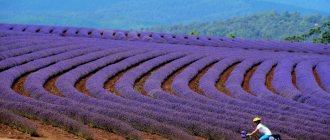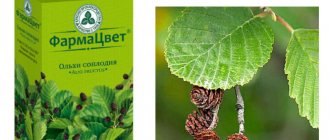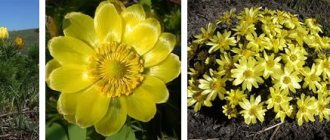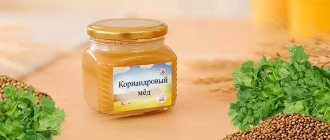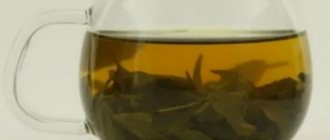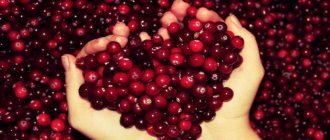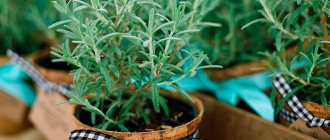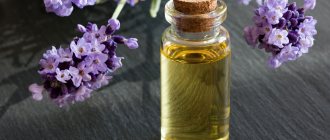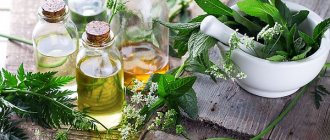Positive properties
The benefits of lavender tea are obvious; it has a calming and relaxing effect, so it is used in the following cases:
- In case of frequent stress, an aromatic drink can calm the nervous system and relieve excessive aggression and irritability. Effective in preventing depression and increased anxiety.
- For headaches of any type. In addition, lavender contains substances that relieve spasms, so this drink will be useful for nervous tics.
- For insomnia, which can be caused by both nervous disorders and simple anxiety during a hard day.
- For premenstrual syndrome, hormonal changes in the body and weight loss.
- For problems with the digestive system as an effective carminative.
- For problems with high blood pressure, which can be caused by stressful situations or diseases of the heart and blood vessels of the body.
- For colds and flu, tea has immunomodulatory properties, which is important for a speedy recovery.
This tea has a calming effect not only due to its chemical composition, but also because of its aroma, which sets a person to a calm rhythm.
Composition and calorie content
The flowers of the plant have a very high content of essential oil - up to 3%, in the leaves - up to 0.35%, in the stems - up to 0.20%. The most valuable component of lavender essential oil is linalyl acetate (up to 50%). Scientists have proven that this substance is a powerful stimulator of cell regenerative functions.
The plant contains the following beneficial substances:
- Cineole.
It is an excellent antiseptic and helps get rid of phlegm. - Tannin.
It has a positive effect on inflammatory and infectious lesions, ulcers and burns of the mucous membranes of the mouth, nose, and larynx. Effective during periods of poisoning with heavy metal salts. - Citral.
It is an antiseptic substance and has an anti-inflammatory and analgesic effect. It has a therapeutic effect on inflammatory processes in the eye area. - Ursulic acid.
It has a very beneficial effect on human health due to its antimicrobial and anti-inflammatory properties. It exhibits cardiac stimulating and anti-atherosclerotic effects, fights tumor growths. - Valeric acid.
Necessary for stimulating colonic motility. - Caproic acid.
Helps the normal functioning of the circulatory system, enhances the detoxification function of the liver, and destroys influenza viruses in the early stages. - Triterpene compounds.
Essentially, these are biologically active carbon compounds. Necessary for the human body to fight against tumors, germs and various viruses. - Tannins.
They have hemostatic, anti-inflammatory, astringent effects, and block the influence of pathogenic flora. They promote the speedy healing of wounds and also have a strengthening effect on the walls of blood vessels. A special film with a protective base is formed on the gastric mucosa, thereby preventing inflammation and damage. - Borneol.
First of all, it is an excellent antiseptic that has an analgesic and tonic effect, helps get rid of stress and relieve nervous tension, and tones the heart. Can improve blood circulation and stimulate digestion. - Coumarin.
Slows down the process of blood clotting and has a special aroma. - Organic acids.
Their important role is manifested in metabolic processes. - Mineral salts.
Every cell of the body needs these substances, otherwise the person may die. They actively participate in life, normalize many functions, promote hematopoiesis and tissue regeneration, and maintain the alkaline-acid balance. - Lavandulol.
Obtained from essential oil. Has a bactericidal effect. Most often it is an integral component of perfume products. - Bitterness.
They have a tonic and restorative effect on people. They are used if it is necessary to improve the digestion process, in case of exhaustion, neurasthenia or loss of strength. Stimulate and restore metabolic processes. - Resin.
Treats skin diseases, inflammatory processes of the respiratory tract, some gastric problems, and improves the intestinal microflora.
Calorie content of dried lavender - 23 kcal per 100 g. Proteins - 4 g, fats - 0.7 g, carbohydrates - 0.2 g.
Collection and procurement of raw materials
The plant grows well in warm climates that are not subject to sudden changes in air temperature. You can prepare lavender for tea yourself if it is available in your region of residence. To do this, you should remember some points:
- raw materials are collected in July or August, always in the first half of the day, when the flowers bloom;
- drying is done naturally, by hanging small bunches of lavender. It is strictly forbidden to use thermal drying methods, since the plant loses all its beneficial properties;
- carefully dried inflorescences are packed into hermetically sealed storage containers.
There is no need to be upset if there is no place to harvest lavender. You can buy ready-made lavender tea in Moscow or any other region. Or buy dried flowers at a pharmacy and prepare a fragrant drink yourself.
Harvesting
It is very important to properly collect and dry lavender, otherwise it will lose its aromatic properties. It must be cut along with the stem
This is done as close to the end of the flowering period as possible. The stem contains lavender essential oil, so it must also be cut off. When harvesting, it is very important to catch the moment when the plant has almost bloomed. The flower calyxes should already wither, but the seeds should not begin to ripen. It is better to start collecting in the morning or afternoon, when the heat has passed.
It is recommended to dry together with the stems. Drying duration is 14-30 days. Lavender should be put together in bouquets and hung downwards. The room must be clean and dry. The humidity in it should be low. The room should be well ventilated. Dried lavender is stored in linen bags in the form of bouquets. Individual flowers can be placed in a paper bag or glass container. Flowers can also be dried in the sun. Although they will become paler, they will not lose this benefit.
Black tea with hibiscus and lavender
Lilac flowers can be brewed either as a stand-alone drink or in combination with other ingredients. For one serving of tea you will need:
- 300 ml liquid;
- brewing black tea, the amount of which depends on personal preferences regarding the strength of the drink;
- 1 tsp without a hibiscus slide;
- a pinch of lavender flowers.
In a teapot you need to brew black tea and hibiscus tea for a few minutes. Then lavender flowers are added. Ready-made lavender tea can be consumed with either sugar or honey.
Lavender and fennel drink
Lavender tea recipes are multifaceted. One of the most popular remedies for weight loss is tea with the addition of fennel. To prepare it you need:
- 1 tsp fennel;
- 0.3 tsp lavender flowers;
- 0.5 l of liquid.
The ingredients must be poured with boiling water and left for several minutes. It is recommended to consume without adding sugar or honey in small sips.
How to grow lavender
Growing lavender on your own is not difficult. It will grow in any soil, will not disappear in drought, but is very thermophilic. This plant will grow best in loose soil. Make sure that the place where the lavender grows is well lit by the sun. The soil should contain earth, sand and humus. The distance between individual seedlings should be about 40 cm. The seedlings should be lowered into the soil to a depth of no more than 30 cm. Lavender is propagated mainly by cuttings. But sometimes with seeds.
It is best to sow lavender seeds in early spring. If you want to plant seedlings, the ideal time for this would be mid-summer. Cuttings must be cut in the fall before frost sets in. You can do this in early spring. In order for the plant to survive the winter, be sure to cover the cuttings. In spring they should be pruned so that the bushes are renewed. Lavender is a perennial plant. With proper care it will grow for about 15-20 years. The best harvest occurs in the 5-6th year of the plant's life.
tea with oregano - benefits and harm
Chamomile tea with lavender
This drink is recommended for emotional stress and mental fatigue, as the main components have an active sedative effect. To prepare tea you will need:
- 350 ml liquid;
- 1 tsp. lavender;
- 1 tsp. dried medicinal chamomile flowers.
The herbal mixture should be brewed in a teapot for about 7 minutes. Then it is consumed in small sips. To improve the taste, you can add a spoonful of flower honey.
Lavender syrup
This product has all the beneficial properties of a dried medicinal plant, but is quite multifunctional, as it can be added to various teas, cold drinks, baked goods, and ice cream. To prepare it you need the following ingredients:
- 180 ml liquid;
- 250 grams of sugar;
- 3 tbsp. l. lavender.
Cooking method:
- In a small iron container you need to heat the water.
- You need to dissolve the sugar in hot water, stirring the mixture with a spoon.
- Then add lavender flowers.
- Bring to a boil and cook for 7-10 minutes over low heat.
After cooling naturally, the shelf life of the flavor additive is 1 month if kept in the refrigerator.
Other uses of flowers
What other benefits can dried lavender have? Its flowers have many uses in medicine and cosmetology.
- Alcohol tinctures from lavender flowers are used to relieve external inflammation, snake bites, and redness of the mucous membranes.
- Baths with a decoction help with varicose veins and relieve tension.
How to make such a decoction? There are many recipes, from simple to complex. You can simply pour water over the flowers and let them brew, or you can first simmer them over a fire.
- Lavender is also used in aromatherapy to relieve tension.
- Bags of dried flowers repel moths and give clothes a pleasant smell.
- And superstitious people wear its inflorescences to ward off evil spirits.
If you are looking at lavender tea as a way to relieve stress, then you should watch this 16-minute video in which Elena Malysheva talks about other, unusual, ways to deal with stress.
Tea with valerian
This drink will be useful for people who suffer from sleep disorders. The mild sedative effect of valerian and lavender will actively contribute to the normalization of sleep. To prepare the drink you need the following components:
- 1 tbsp. l. dried lavender;
- 1 tbsp. l. dried valerian;
- 700 ml liquid.
It is recommended to use a thermos to brew this tea, since in this way you can extract all the beneficial substances from medicinal herbs. With regular use of this sedative drink, migraines are cured, neuroses and depressive states are eliminated.
Lavender sugar
The purple plant has a rather bright aroma, so some flavoring additives can be prepared from it, which can later be used to make tea and various dishes. One such supplement is lavender sugar.
The preparation method is simple: you need 500 grams of granulated sugar and 4 tbsp. l. dried lavender. The components must be mixed and infused in an airtight container for 1 week. During this time, the plant will completely give up its aroma to sugar. After which the sand can be sifted and eaten.
Iced tea with lavender and peach
This drink can not only refresh you in the summer heat, but also calm your frayed nerves. For preparation you need the following components:
- 1.5 liters of water;
- 400 ml of ready-made lavender tea, pre-cooled;
- 4 sweet peaches;
- 70 g sugar syrup (you can use the lavender syrup from the recipe above).
Preparation of the drink is quite simple: you need to add syrup, ready-made tea and sliced peaches to cold water. Then let the tea brew in the refrigerator for 2 hours.
What does lavender look like and where does it grow?
The plant can be found in large quantities in India, the Mediterranean countries, and the Canary Islands. The plant was brought to Europe by the ancient Romans. The most famous lavender fields grow in France, in the Provençal regions. But it is also grown in other countries: Russia, Ukraine, Italy, Moldova.
If we talk about the regions of Russia, lavender fields can be found in abundance in Crimea. Bakhchisarai, the outskirts of Sevastopol, and Cape Tarkhankut are famous for them.
Lavender is a very beautiful plant with a delicate aroma. It grows in bushes with green stems and flowers at the ends. Despite their apparent fragility from the outside, the roots of the shrubs penetrate deep into the ground. The bushes can reach 60-70 cm in height.
The leaves of the plant have an oblong shape. The inflorescences are located on the peripheral part of the stem, where there are no leaves. The color of the flowers varies from pale blue to purple. From the photo below you can see how beautiful the lavender fields are.
How to grow lavender
Growing lavender on your own is not difficult. It will grow in any soil, will not disappear in drought, but is very thermophilic. This plant will grow best in loose soil. Make sure that the place where the lavender grows is well lit by the sun. The soil should contain earth, sand and humus. The distance between individual seedlings should be about 40 cm. The seedlings should be lowered into the soil to a depth of no more than 30 cm. Lavender is propagated mainly by cuttings. But sometimes with seeds.
In ancient times, superstitious people wore crosses made from lavender inflorescences; it was hung at the entrance to their homes to protect themselves from evil spirits. It is believed that God gave rosemary and lavender to Eve and Adam during their expulsion from paradise, where lavender acted to delight the soul, and rosemary to support the spirit.
Lavender contains essential oil, its leaves contain 0.37%. In inflorescences - 1.2%, in stems - 0.2%. The essential oil consists of esters of L-linalool alcohol and butyric, acetic, caproic, and valeric acids. It also contains citral, nerol, amyl alcohol, camphene, cedren and other substances. Gerniarin, coumarin and ursolic acid were found in the flowers when the plant was examined.
Lavender is also added to industrially produced green tea. This drink has a powerful antioxidant effect; its consumption can balance blood sugar levels and calm the nervous system. Lavender tea is recommended for anyone trying to control body weight and appetite, and it also has mild diuretic properties.
It is best to sow lavender seeds in early spring. If you want to plant seedlings, the ideal time for this would be mid-summer. Cuttings must be cut in the fall before frost sets in. You can do this in early spring. In order for the plant to survive the winter, be sure to cover the cuttings. In spring they should be pruned so that the bushes are renewed. Lavender is a perennial plant. With proper care it will grow for about 15-20 years. The best harvest occurs in the 5-6th year of the plant's life.
Lavender collection
To harvest the plant, flowers need to be collected on a sunny morning. At this time, more than half of the flowers in the inflorescences are open. Carefully cut off flower stalks about 10 cm long, tie them into bunches and hang them to dry in a dark, well-ventilated place. The bundles should not touch each other
After they dry, carefully collect the flowers from them. Lavender raw materials should be stored in canvas bags so that they do not lose their medicinal properties.
It is safer to purchase lavender in ready-made dry form at the pharmacy.
How to dry
The stems cut with pruning shears or a sharp knife are sorted out, removing damaged parts. Next, the plants are collected into bunches of a diameter that fits in the palm of your hand.
The bundles are tied with threads or thin ropes and hung with the cut side up in a ventilated, dark, dry room.
You can also dry the twigs by laying them out on a net in the open air. It should be borne in mind that direct sunlight will cause the color of the inflorescences to fade.
